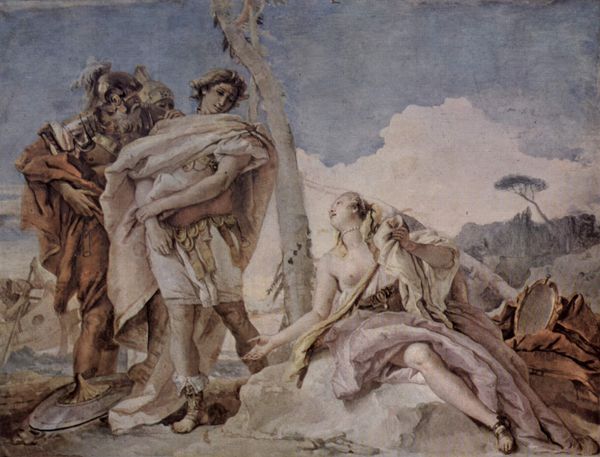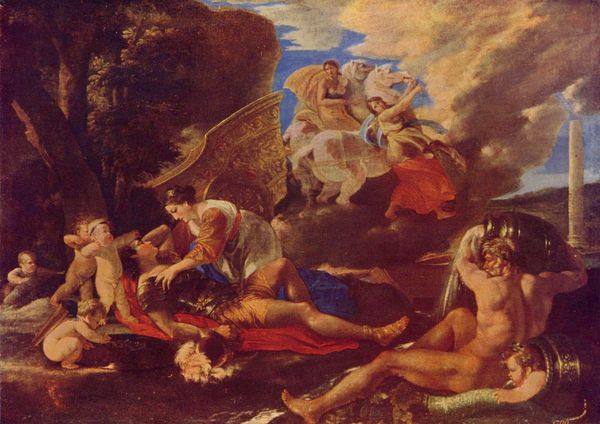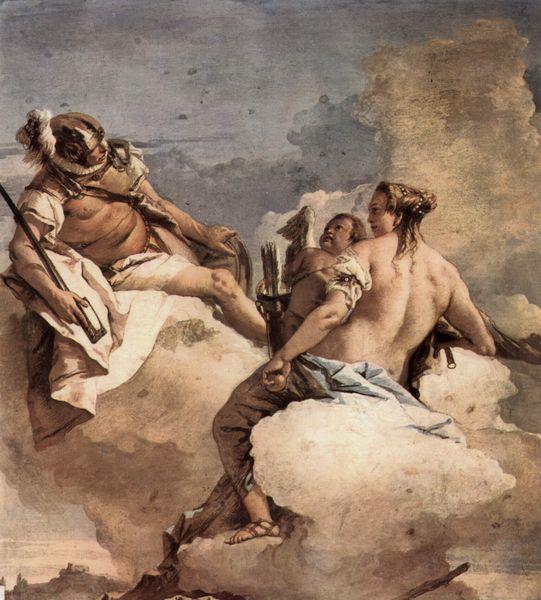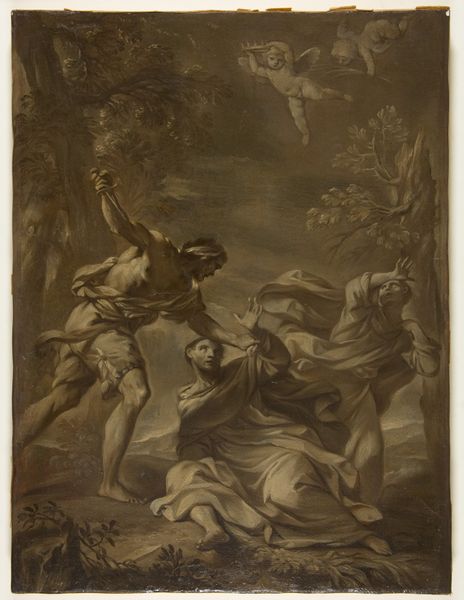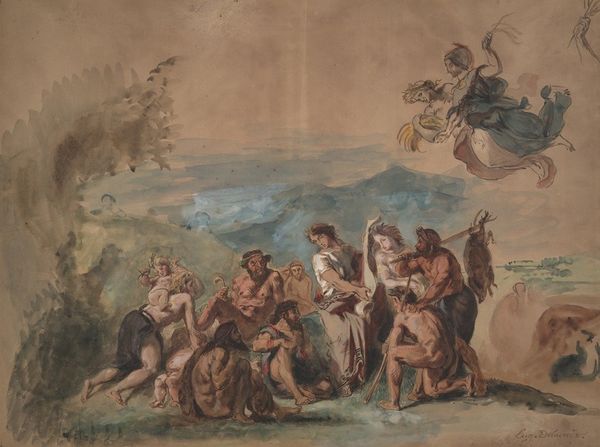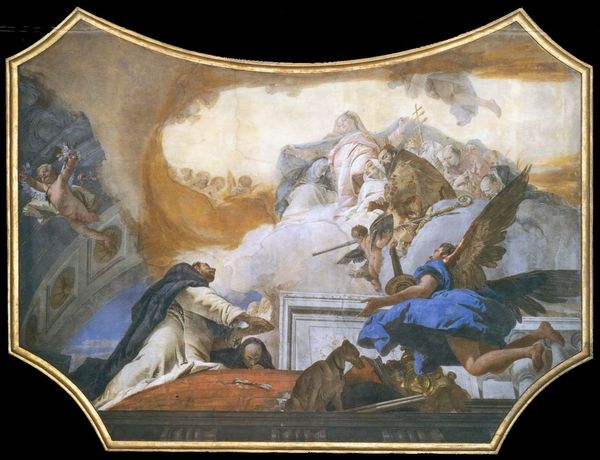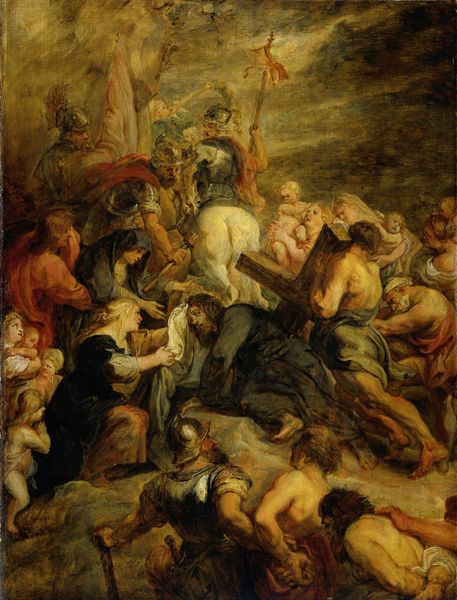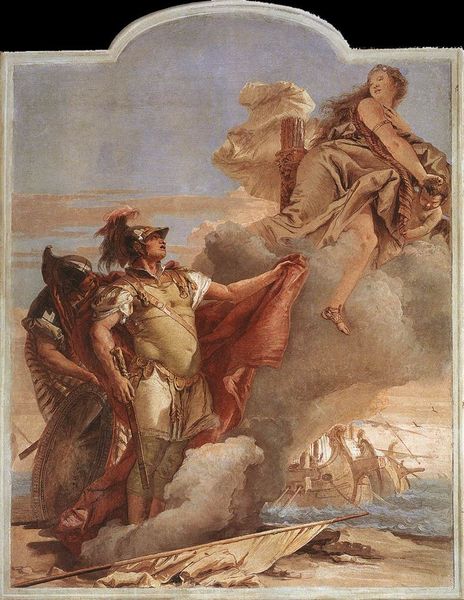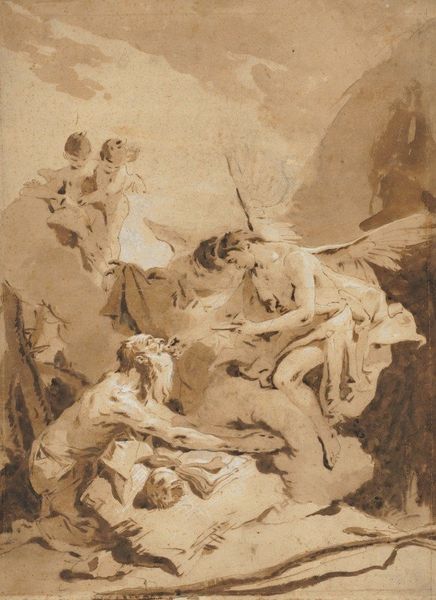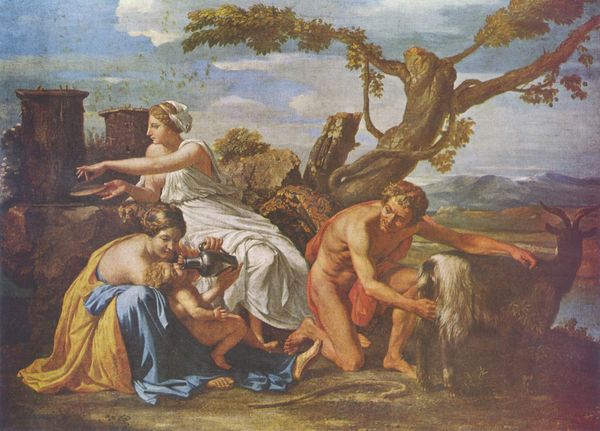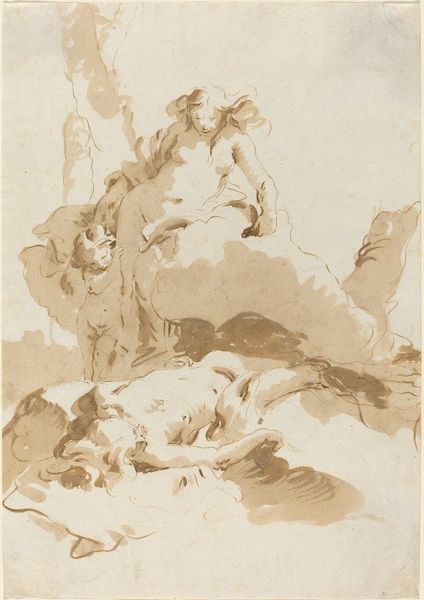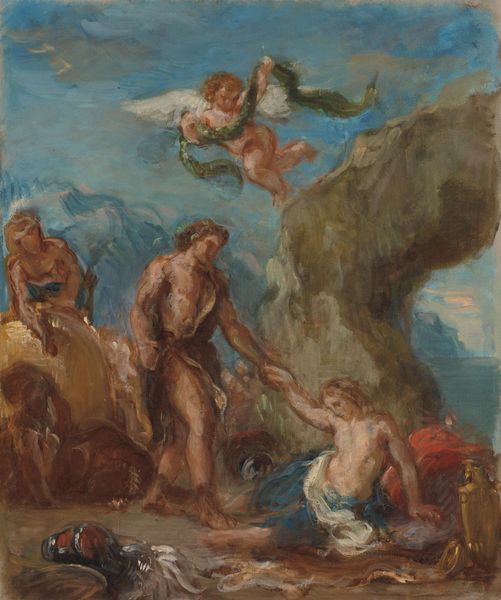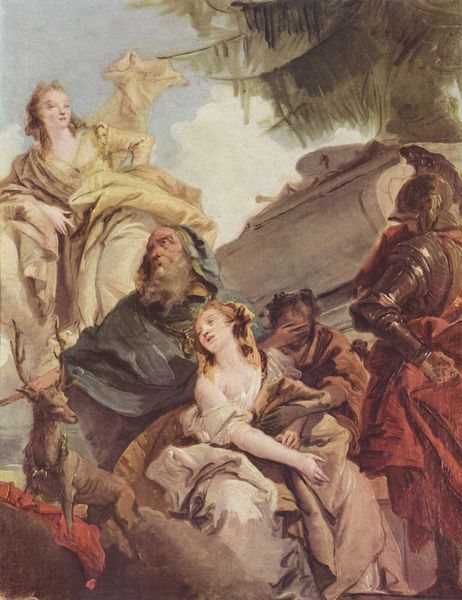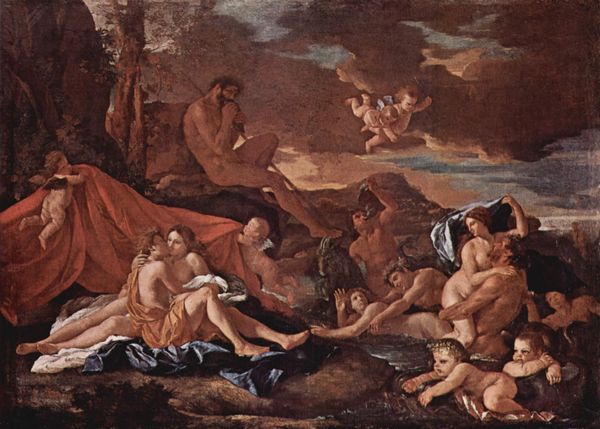
Angelica, accompanied by a shepherd who cares Medorus with herbs 1757
0:00
0:00
Copyright: Public domain
Editor: This is "Angelica, accompanied by a shepherd who cares Medorus with herbs," an oil painting by Giovanni Battista Tiepolo from 1757. The scene feels so dreamlike, almost suspended in time. What's your take on this piece? Curator: Well, isn’t it just lovely? I am drawn to the dreamy atmosphere—it feels less like a history painting, and more like stumbling into someone's half-remembered myth. The composition, though classically arranged, flirts with the whimsical. Do you get the sense that Tiepolo enjoyed blending high drama with a touch of theatre? Editor: Absolutely. There's something very performative about the shepherd's stance, and even the way Angelica reclines. Where do you think that theatricality comes from? Curator: Partly, it is in the Rococo spirit. Tiepolo loves lightness and charm but this also relates to his artistic intuition, transforming the established cannon to engage a playful relationship with the past. How about the horse, though? It seems almost startled. Do you think Tiepolo intended a bit of humour? Editor: Perhaps. I was so focused on the human drama. It's funny how that equine presence adds an element of the unexpected. I also never understood the Rococo style until now: it really makes history accessible. Curator: And personally engaging. A fine artist does more than merely show; they lead one to perceive, and transform what might seem merely historical into something intensely human. Don't you think? Editor: I completely agree. Looking closely at the Rococo aspects of Tiepolo, how it really breaks down the serious narratives through playful interpretation... it definitely transformed my understanding!
Comments
No comments
Be the first to comment and join the conversation on the ultimate creative platform.
